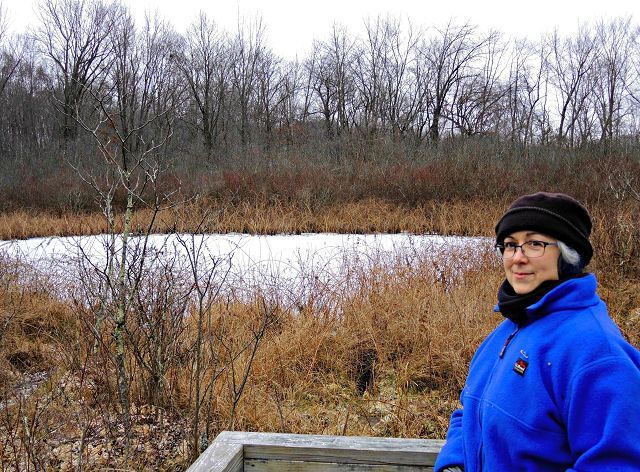Brown's Lake Bog excellent example of the impact of Ohio's last glacier
When is the best time of year to walk in the woods? The short answer is it depends. Considerations can include temperature, peak season for observing flora and fauna, ability to see a view, how wet the soil may be, crowds and more.
Fall and winter might just be the favored time to visit Brown's Lake Bog Preserve, a 100-acre Nature Conservancy property just two miles west of Shreve.
Tens of thousands of years ago a glacier passed through Ohio, leaving holes called kettles and hills known as kames, and Brown's Lake Bog is one of the few remaining kettle hole wetlands in Ohio. Most of these kettle lakes have filled in and are now found to be swampy forests, but the seven-acre kettle hole at this Southern Wayne County preserve still persists, thanks in part to the efforts of The Nature Conservancy, which purchased the land in 1966.
“The Nature Conservancy primarily maintains the trails and manages the bog (proper) to ensure the plants/plant community are in good shape,” said Karen Adair, a project manager with the international organization.
Visitors park their vehicles in a small lot just off Brown Road and immediately see a large rock with an embedded plaque proclaiming 1967 as the year Brown's Lake Bog was registered as a National Natural Landmark due to its “exceptional value in illustrating the natural history of the United States.”
A short path descends into the perimeter of a damp woods that buffers the bog. Just as hikers notice a change in the plant life, a boardwalk is set in place to avoid stepping on the mucky soil and sphagnum moss.
Cinnamon ferns, orchids, grasses and berry plants flourish on the wet substrate en route to the lake. But perhaps the most interesting primal plants found in the bog are two types of carnivorous plants: the round-leaved sundew and the easily spotted pitcher plant.
The first time avid hiker Jennifer McMullen visited Brown's Lake Bog Preserve this fall, she saw thousands of red-green pitcher plants at ground level. Because of this she almost missed viewing the kettle lake that is responsible for the rare wetland habitat.
“I wanted to find some new hikes that were close (to Wooster), so I didn't have to drive too far,” McMullen said. An internet search revealed this unique site just 12 miles from Wooster to her.
“I like going there this time of year because it is so peaceful,” McMullen said. “You don't get to see leaves and flowers, but you get to see the landscape and have a sense of place. I definitely want to get back out there when things are blooming.”
The preserve welcomes visitors throughout the year during daylight hours but cautions visitors to wear insect repellent during the warmest months of the year. The acidic property of the sphagnum along with its ability to insulate the water from rapid temperature changes provides the right environment for more than 20 rare plants but also creates the right conditions for mosquitoes. The carnivorous plants are happy to have a large supply of insects, but visitors may not be so appreciative.
With upcoming changes to Ohio personnel at The Nature Conservancy, Adair said the best contact number for anyone interested in volunteering is the Dublin office at 614-717-2770 ext. 118. She said, “We need people who are willing to check on the preserve each week, each month or however often they can to look for trash, problems or downed trees. If they can resolve it themselves, that's a big help. If it's something like a downed tree over the trail, their calling us to let us know so we can quickly take care of it is a huge help.”
Just be sure to dress for the season when you go.








